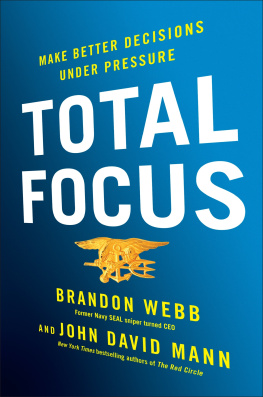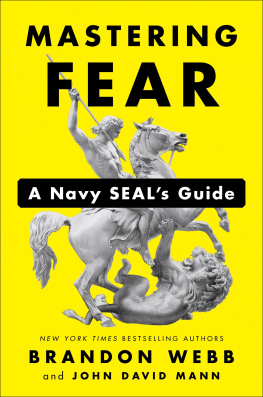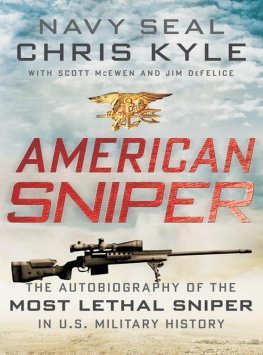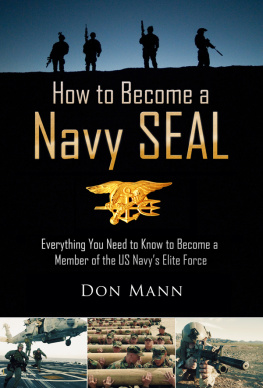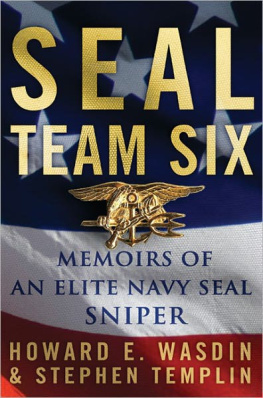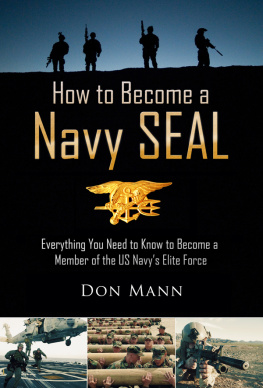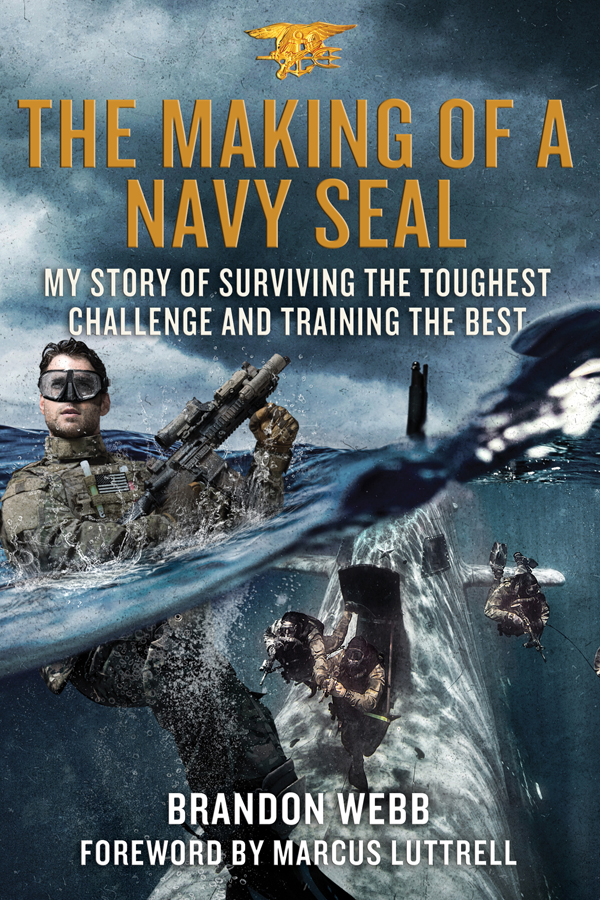Contents
Guide

The author and publisher have provided this e-book to you for your personal use only. You may not make this e-book publicly available in any way. Copyright infringement is against the law. If you believe the copy of this e-book you are reading infringes on the authors copyright, please notify the publisher at: us.macmillanusa.com/piracy.
For my three children
I first met Brandon Webb when I was a student in the Naval Special Warfare sniper course. Sniper school was one of the toughest things Ive ever done. In some ways it was even more difficult than the Basic Underwater Demolition/SEAL training (BUD/S), that every SEAL undergoes. The sniper course starts with a stalking phase, which is all about stealth and concealment. We are trained to crawl painstaking inches and yards undetected across enemy-held territory. I have to be honest: this was not easy for me. The shooting part came naturally. The stalking part did not. Im a pretty big guy, and trying to make myself look like a plant or bush instead of a six-foot-tall Texan it just wasnt happening. I dont know how I would have gotten through it if it werent for Brandon being my instructor. Brandon and his team were incredibly tough on us. They were intent on making us some of the best special operations forces in the field. And they succeeded. It wasnt just a matter of making our lives hard. Brandon went beyond the call. He set aside time after course hours to answer questions and work with all the students. He mentored me, and did whatever it took to make sure I knew my stuff.
Graduating sniper school was one of the proudest achievements of my life.
I went from sniper school almost directly to Afghanistan. Not too many months after being in Brandons class, on June 29, 2005, I found myself in the soaring Hindu Kush mountains, a subrange of the Himalayas, not far from the Afghanistan-Pakistan border. Everyone else in my recon team was gone, including my brother Morgans best friend, Matt Axe Axelsonall killed by the same couple hundred Taliban forces who were now doing their level best to kill me, too. If it had not been for Brandons patience, care, and skill with me in the sniper course not long before, I can promise you this: I would have left these Texan bones bleaching on that hillside.
Brandons training saved my life then, just as it would again several years later in a very different environment, fighting house to house on the hot, muggy streets of Iraq.
And I know Im not the only one. There are a lot of people out there, people whose names youll never hear, who are alive today because of the efforts, skill, and dedication of Brandon and others like him. What youre about to read is not just the story of the making of a Navy SEAL sniper but the story of one guy who went on to help shape the lives of hundreds of elite special operations warriors.
It was a great honor to serve on and off the battlefield with the men of the U.S. Navy SEAL teams and U.S. SOCOM (Special Operations Command). Brandon and I have both lost many good friends over the years, and its comforting to know that the memories of these great warriors will live on in the stories we share with you. My hope is that you will come to know them as intimately as we did, and that you will continue to pass on their stories of heroism so that we may never forget the ultimate sacrifice they made for the freedoms we enjoy today.
Brandon has a great story to tell, and it is living proof that you can achieve anything you put your mind to. Its an honor to introduce his memoir.
Never quit.
Marcus Luttrell (USN Ret.), Navy SEAL and bestselling author of Lone Survivor

Beginning with ancient times and continuing throughout the twentieth century, war had always been a matter of hurling masses of men and military equipment against one another. The bigger the tank, the aircraft, or the naval destroyer, and the more men you deployed, the greater your chances of victory were.
Then came October 12, 2000. On this date, the USS Cole , a naval destroyer, was refueling in Aden, Yemen. Two suicide bombers piloting a small speedboat full of explosives attacked the ship. Seventeen crew members died, another thirty-nine were injured, and the huge ship was severely crippled. The attack on the USS Cole opened my eyes to how ill prepared we were for the threat that existed everywhere around us. This was not just a catastrophe, and it wasnt just about whether we were adequately prepared for surprise attacks. There was a fundamental shift happening here, a shift in the very nature of military conflict, and this attack off the coast of Yemen was arguably its wake-up call.
There was a crew of nearly three hundred on board the Cole. There was no comparison between it and the small speedboat with just two individuals on board. As weapons of war go, it doesnt get much more massive than a billion-dollar destroyerbut it had just been nearly sunk by two guys in a dinky little speedboat. Clearly the number of men and the size of military equipment were no longer all that mattered.
There was no turning back and no ignoring it any longer. We had definitely entered the age of asymmetrical warfare. That is, with the attack on the USS Cole , we had fully and violently entered the age of a new kind of war, one in which the weaker opponent in a conflict uses terrorism in an attempt to gain an advantage.
The years following the attack on the Cole saw a radical shift take place in the makeup of the U.S. Department of Defense, especially in relation to its special operations forces. In the long story of war, special operationsthe British and Australian Special Air Service; the American Green Berets, Army Rangers, and Navy SEALswere exactly that: special, something you didnt use every day. Spec ops forces were kept on the shelf and brought out for deployment only in certain circumstances. Those of us in spec ops were the icing on the cake of massive destruction, the period at the end of a sentence of overwhelming forces. Special operations were there mainly to support the larger mission.
Now that equation has changed. Today, the relationship has been turned virtually on its head. Over the first part of the twenty-first century, the entire strategy of American military organization has shifted toward one in which our massive assets, such as destroyers, aircraft carriers, and nuclear submarines, have been reconfigured to support small spec ops field teams and units. The spec ops warrior of the twentieth century was fundamentally an outsider who worked on the edges of military strategy. Today he stands at its core.
As for the terrorists, who are they? Al Qaeda, a militant Islamic extremist organization founded by Osama bin Laden, was behind the attack on the USS Cole . They were also behind the first-ever attacks on the U.S. mainland, which took place on September 11, 2001.
Osama bin Laden and al Qaeda were based in Afghanistan. When the Taliban, the ruling militant Islamic extremist organization in Afghanistan, refused to turn bin Laden over to the United States after 9/11, the United States and a coalition of countries began Operation Enduring Freedom, in Afghanistan, on October 7, 2001.
The Taliban was overthrown as Afghanistans official government, but its acts of terrorism against the Afghan people and coalition forces have kept the conflict going over there.


